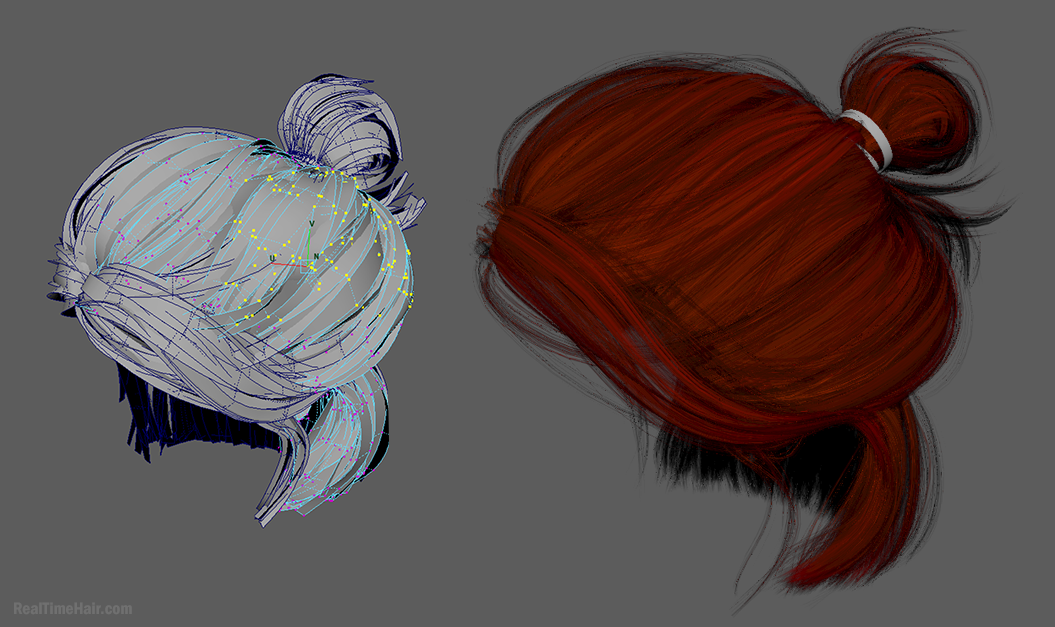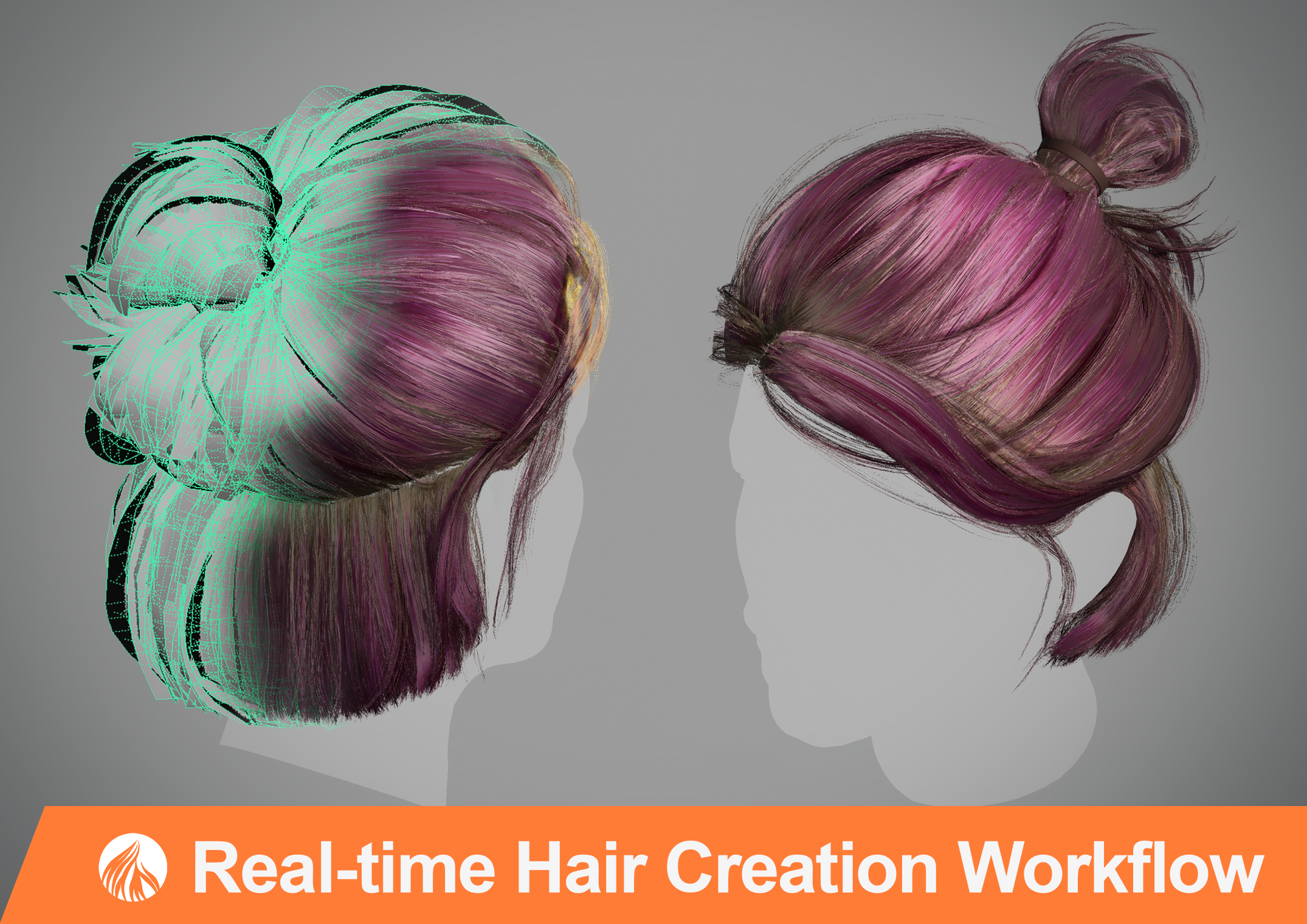How To Create Hair Caps: a few different workflows
The Hair Cap is basically the mesh that has a shape of the character’s scalp, and plays a role of a hair coverage layer and placed under the hair cards. It’s most useful for the short hairstyles, which have buzzcut or fade.
Creating the hair cap essentially means to create the texture of the short hair for the character’s scalp. Because placing the hair cards for the short hair like the buzzcut or fade is not always going to look good. And maybe will save you some triangles.
Here are a few ways to create the hair cap for real-time characters.

13 Workflows To Place The Hair Cards For Real-time Hair
Here are some useful techniques for working with hair cards for game-ready hair. Since, the whole process is slow, intimidating, there are some hacks, tools and plugins that can speed up the process.
I go over 13 different workflows, some of them are free and some use paid plugins, but you will find worrkflow for any 3d software in this article.

8 Techniques To Create Textures For Real-time Hair
These are the workflows to create textures for game-ready hair and to be used for hair models made of polygonal cards (strips).
Usually, we would need this set of textures for real-time hair: Alpha, Diffuse (optional, as sometimes the color can be applied directly in the game engine shader), Depth (or Height in another word), Unique ID and Root (or Gradient Ramp). Sometimes, it is also necessary to have Ambient Occlusion, Normal and Flow maps. Check with your Technical Artist or Game Programmer, which maps are needed in your case. You can also refer to my chart of the game textures example…

Real-time Hair Creation Workflow
Though there are a gazillion ways to make hair look good in the game, a few common workflows are currently used for real-time hair production. They vary depending on the desired rendering quality, polygon budget and the restrictions/options of the shader in the game engine of choice.
Hair for games is made by creating hair strips (so-called hair cards) to represent the hair strands and applying the alpha texture on them. Placing hair cards layer by layer simulates the mass of the hair. The higher amount of hair cards gives the hair a more realistic look but makes the hair model expensive. Thus artists try to achieve the best result by spending less card amount.
